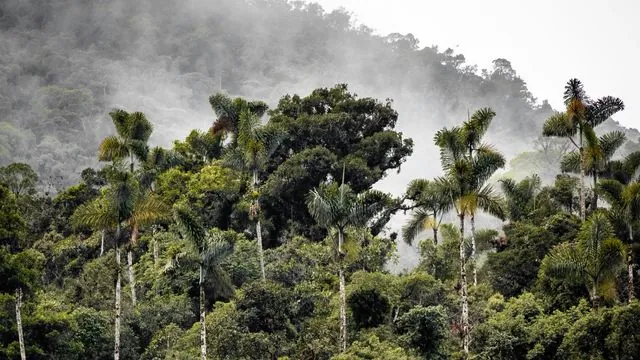
Revolutionary Study Unveils How Amazon Canopies Harness Excess Sunlight for Survival
2025-06-16
Author: Arjun
Groundbreaking Findings from the Amazon Rainforest
A captivating new study from Michigan State University has unveiled the extraordinary abilities of Amazon rainforest canopies to manage intense sunlight, showcasing their resilience amidst escalating climate challenges. With support from the National Science Foundation and NASA, this research sets a precedent for monitoring how these majestic trees cope under increasingly extreme conditions.
Tropical Trees: Nature’s Solar Antennas
Led by doctoral candidate Leonardo Ziccardi and Associate Professor Scott Stark, the research reveals that tropical trees function as colossal solar antennas, capturing vast amounts of light energy. This energy must be meticulously regulated; when it surpasses the trees' photosynthetic needs, the excess is either emitted as heat or released as light through a process known as chlorophyll fluorescence.
A Journey into the Canopy
Ziccardi's ambitious four-year expedition involved scaling towering trees nearly 200 feet high in the central Amazon. This hands-on experience allowed him to gather a remarkable dataset, analyzing the fate of photons absorbed by countless leaves across various species and environmental conditions.
Innovative Technology at Work
Utilizing the cutting-edge MultispeQ device, developed by co-author David Kramer, the research team captured intricate details of how leaves manage the fine balance between photosynthesis and energy dissipation under natural settings, making significant strides in understanding canopy dynamics.
Understanding Canopy Resilience Under Climate Stress
As the Amazon faces increasing threats from greenhouse gases and deforestation, comprehending how trees manage their light energy becomes crucial for predicting their future viability. The study highlights a critical adaptation: even amid intense sunlight and atmospheric dryness, many leaves managed to sustain photosynthesis by reallocating energy towards dissipation strategies.
New Insights into Light and Drought Responses
For the first time, the research outlines a sophisticated, three-phase response of leaves to varying light and drought conditions. Initially, leaves effectively balance photosynthesis and fluorescence. However, as light intensity and drought stress escalate, this balance falters, leading to overwhelming heat-protective mechanisms, decreased photosynthesis, and heightened fluorescence—signs of potential damage.
Implications for Forest Health Monitoring
These findings have profound implications for scientists utilizing satellite data to assess forest health through solar-induced fluorescence (SIF). Traditionally, SIF has been viewed as an indicator of photosynthesis, but this study reveals that in high-stress scenarios, fluorescence may rise even as the photosynthetic process deteriorates, risking overpredictions of ecosystem productivity during droughts.
The insights from this research not only deepen our understanding of Amazonian trees but also call attention to the urgent need for precise monitoring techniques as climate change continues to reshape our planet's forests.

 Brasil (PT)
Brasil (PT)
 Canada (EN)
Canada (EN)
 Chile (ES)
Chile (ES)
 Česko (CS)
Česko (CS)
 대한민국 (KO)
대한민국 (KO)
 España (ES)
España (ES)
 France (FR)
France (FR)
 Hong Kong (EN)
Hong Kong (EN)
 Italia (IT)
Italia (IT)
 日本 (JA)
日本 (JA)
 Magyarország (HU)
Magyarország (HU)
 Norge (NO)
Norge (NO)
 Polska (PL)
Polska (PL)
 Schweiz (DE)
Schweiz (DE)
 Singapore (EN)
Singapore (EN)
 Sverige (SV)
Sverige (SV)
 Suomi (FI)
Suomi (FI)
 Türkiye (TR)
Türkiye (TR)
 الإمارات العربية المتحدة (AR)
الإمارات العربية المتحدة (AR)